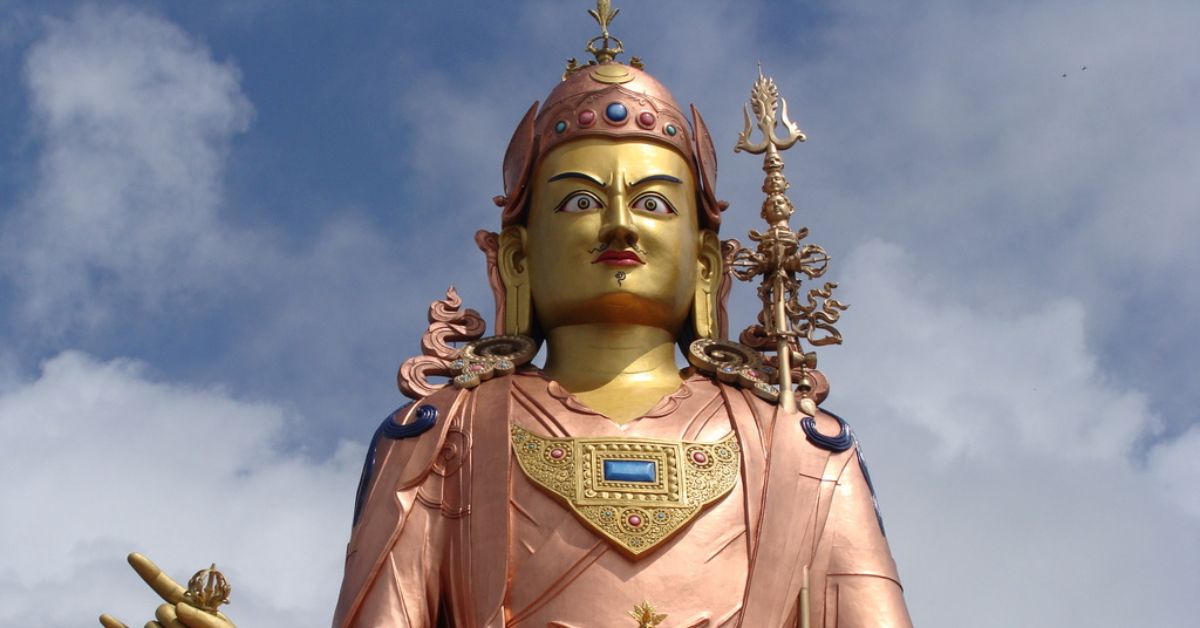Nestled amidst the serene landscapes of Sikkim lies a sacred haven of Buddhist spirituality: the revered Do Drul Chorten. This stupa, located near Gangtok, the capital city of Sikkim, stands as a testament to the rich cultural heritage and profound religious traditions of the region.
Surrounded by prayer flags fluttering in the mountain breeze and framed by lush greenery, Do Drul Chorten beckons travelers and pilgrims alike to experience its tranquil ambiance and spiritual significance. From its intricate architecture adorned with religious symbols to the rhythmic chants echoing through its surroundings, every aspect of this sacred site offers a glimpse into the heart of Sikkim’s Buddhist legacy.
How to reach:
From Gangtok:
- Taxi or Car: This is a convenient option for a direct journey. Taxis are widely available in Gangtok and can be hired for a round trip or by the hour. The travel time is roughly 10-15 minutes depending on traffic conditions. Costs are generally reasonable for the short distance.
- Public Transport: Shared taxis and local buses offer a budget-friendly way to reach Do Drul Chorten. These depart from Gangtok’s main taxi stand or bus station. Expect a similar travel time of 10-15 minutes, though this can vary depending on stops and traffic.
Best time to visit:
Spring (March-May):
Visiting Do Drul Chorten during Sikkim’s spring, from March to May, offers pleasant weather with gradually rising temperatures. This makes exploring the stupa and its surroundings comfortable. The landscape comes alive with blooming rhododendrons, orchids, and wildflowers, creating a vibrant tapestry of color.
Autumn (September-November):
Autumn, lasting from September to November, is another excellent time to visit Do Drul Chorten. Clear skies and cool temperatures prevail, making it perfect for sightseeing and outdoor activities. The monsoon rains have revitalized the vegetation, and the surrounding Himalayan peaks are often strikingly clear.
Attractions:
Namgyal Institute of Tibetology:
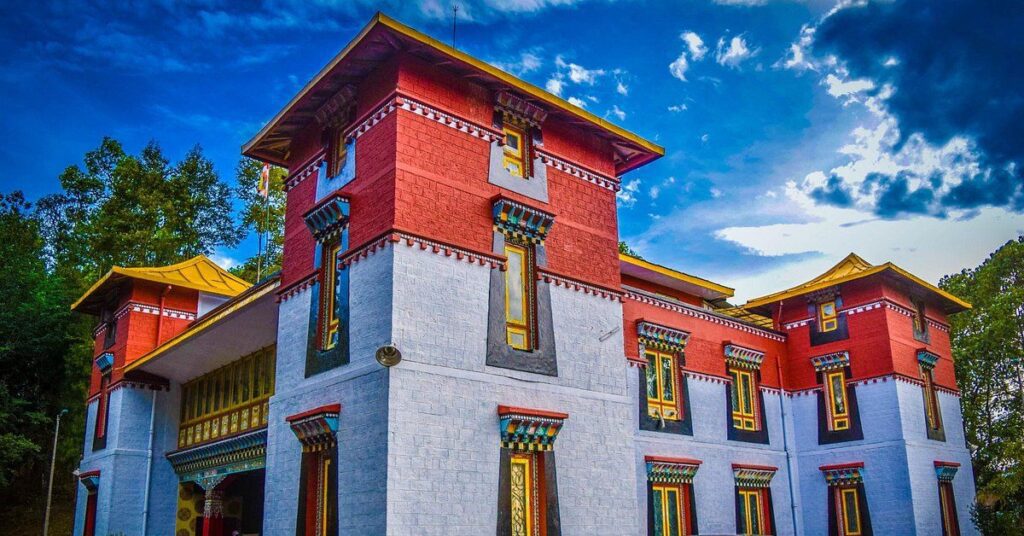
Located near Do Drul Chorten, the Namgyal Institute of Tibetology is a center for Tibetan culture and Buddhist studies in Sikkim. Established in 1958, the institute houses a vast collection of Tibetan artifacts, manuscripts, thangkas, and statues. These treasures offer valuable insights for researchers and visitors interested in Tibetan history and Buddhism. The institute also features a museum that explores the development of Tibetan Buddhism, highlighting its impact on Sikkim’s cultural landscape. The institute’s peaceful gardens and the surrounding Himalayan views create a serene environment for reflection and learning about Tibetan spiritual traditions.
Banjhakri Falls and Energy Park:
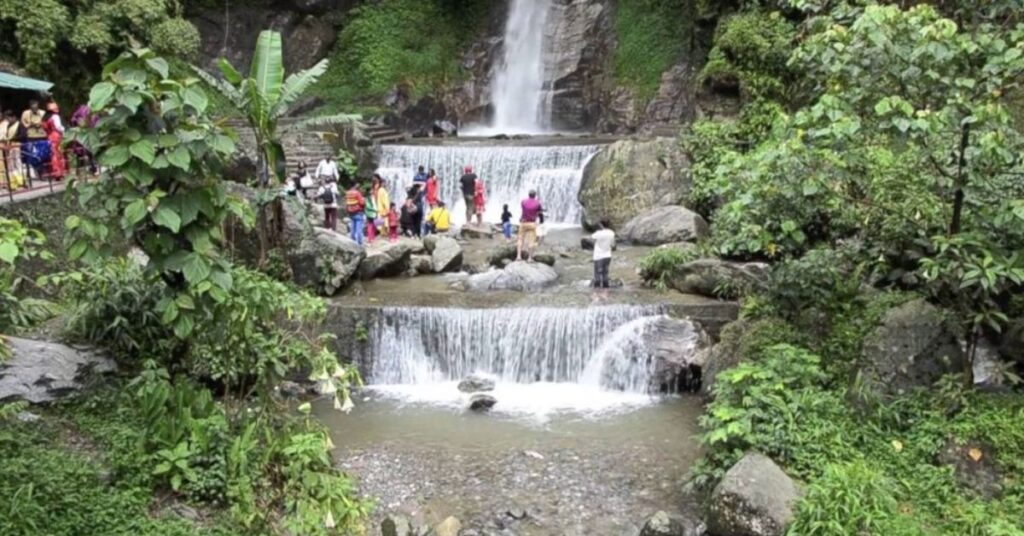
Just outside Gangtok lies Banjhakri Falls and Energy Park, a place where natural beauty intertwines with cultural heritage. The park honors the Banjhakri, benevolent forest spirits revered by Sikkim’s indigenous people. As you wander through landscaped gardens, you’ll encounter sculptures that showcase local legends and traditional beliefs. The park’s heart is the cascading Banjhakri waterfall, surrounded by lush greenery. Its serene setting is ideal for relaxation or enjoying a picnic. The park also boasts a lake, bridges, and meditation spaces, offering visitors opportunities to connect with nature and delve into Sikkim’s rich cultural heritage.
Ganesh Tok:
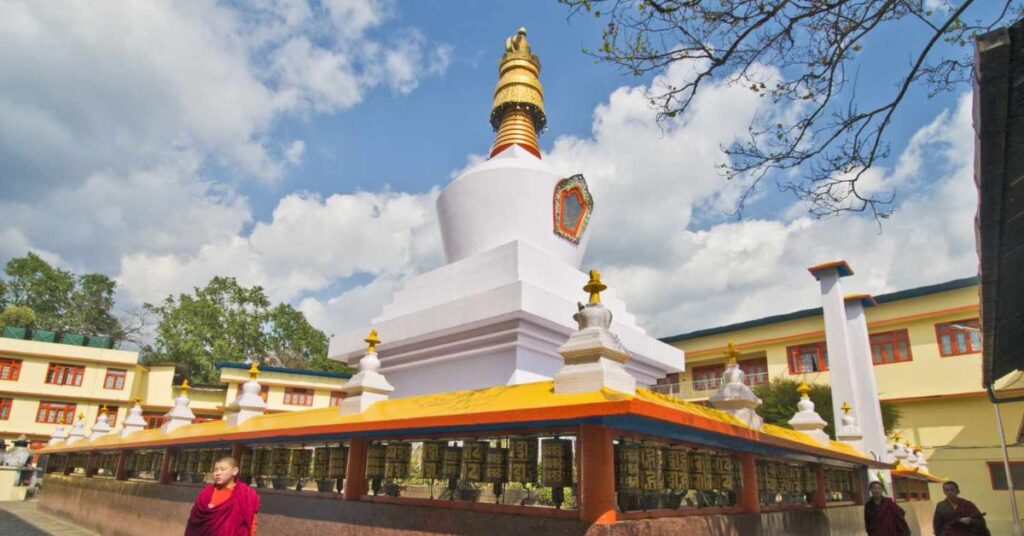
Nestled on a hilltop overlooking Gangtok, Ganesh Tok is a compact Hindu temple dedicated to Lord Ganesha, the deity associated with overcoming obstacles. The temple boasts breathtaking vistas of Gangtok city and the distant Himalayan peaks. Visitors ascend a staircase adorned with vibrant prayer flags, leading to the temple where they can offer prayers and seek blessings.
Beyond its religious significance, Ganesh Tok offers a tranquil atmosphere for meditation and reflection amidst the serene mountain surroundings. The cool air and captivating views make it a popular destination for both spiritual seekers and nature lovers exploring Sikkim.
Seven Sister Waterfalls:
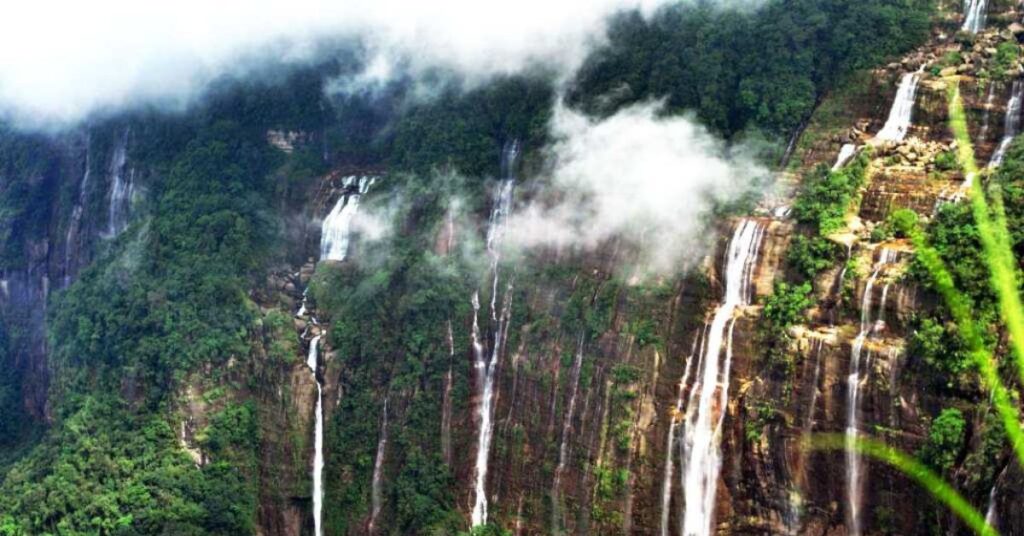
Located along the Gangtok-Lachung highway, the Seven Sisters Waterfalls are a captivating sight. This series of waterfalls comprises seven individual streams cascading down a cliff face. The name evokes the seven sister states of Northeast India. The waterfalls reach their peak majesty during the monsoon season, transforming into powerful cascades. Viewpoints along the road offer opportunities to admire the falls plunging into the verdant valley below. The surrounding landscape, a tapestry of dense forests and mist-shrouded mountains, enhances the ethereal beauty of this natural wonder. No wonder it’s a favorite spot for photographers and nature lovers in Sikkim.
Local Experiences:
Immerse Yourself in Local Culture:
- Explore bustling markets like Lal Bazaar and MG Marg in Gangtok for traditional handicrafts, souvenirs, and local delicacies.
- Stay with a local family in a traditional homestay to experience Sikkimese culture, cuisine, and hospitality firsthand.
- Participate in vibrant festivals like Losar (Tibetan New Year), Saga Dawa, and Pang Lhabsol to witness traditional dances, rituals, and celebrations.
- Savor local Sikkimese cuisine, including momos (dumplings), thukpa (noodle soup), gundruk (fermented leafy greens), and traditional Sikkimese tea (chang).
Explore Nature’s Beauty:
- Visit Temi Tea Garden, Sikkim’s only tea estate, to learn about tea cultivation, enjoy scenic mountain views, and savor fresh tea.
- Relax in natural hot springs like Yumthang Hot Springs and Borong Hot Springs for therapeutic baths amidst scenic surroundings.
- Explore other monasteries like Pemayangtse Monastery in Pelling, Rumtek Monastery near Gangtok, and Tashiding Monastery in West Sikkim for spiritual experiences and stunning architecture.
- Engage in trekking, river rafting, paragliding, and mountain biking amidst Sikkim’s pristine landscapes and challenging terrains.
- Discover diverse bird species at places like Fambong Lho Wildlife Sanctuary, Kyongnosla Alpine Sanctuary, and Maenam Wildlife Sanctuary.
Explore Rural Life:
- Take guided tours to rural villages like Lachung, Yuksom, and Ravangla to learn about local customs, traditions, and rural lifestyles.
Travel tips:
- Permits: Obtain any required permits beforehand for restricted areas like Nathula Pass and Tsomgo Lake. Check with registered tour operators or the Sikkim Tourism office for details.
- Weather: Sikkim’s weather varies. Pack layers of clothing, including warm options even in summer, especially for higher altitudes. Bring rain gear during the monsoon season.
- Altitude: Many attractions are at high altitudes. Take it slow and allow time to acclimatize, particularly if coming from lower elevations.
- Local Transport: Taxis and shared jeeps are common. Negotiate fares upfront and be prepared for winding mountain roads.
- Cash: ATMs might be scarce in remote areas. Carry enough cash, particularly smaller denominations, for daily expenses and local markets.
- Local Customs: Sikkim is culturally diverse. Respect local customs, traditions, and dress modestly, especially at monasteries and religious sites.
- Health: Pack basic medications, especially for altitude sickness and digestion issues. Drink bottled or boiled water and avoid raw or uncooked food from street vendors.
- Photography: Always ask permission before photographing people, particularly in rural areas. Respect any restrictions on photography at religious sites and monasteries.
- Environmental Awareness: Sikkim is known for its natural beauty. Help preserve it by avoiding littering, using reusable water bottles, and following designated trekking paths.
Conclusion
Sikkim’s Do Drul Chorten offers more than just Buddhist history. Immerse yourself in serene landscapes, vibrant culture, and Sikkim’s natural beauty. Explore nearby gems like the Namgyal Institute of Tibetology or Rumtek Monastery. Savor local cuisine or attend a festival for a deeper connection. To make the most of this enchanting destination, visit Xplro.com for essential travel tips on permits, local customs, and weather. Whether you seek spiritual awakening, breathtaking scenery, or cultural immersion, Sikkim and its treasures promise an unforgettable and fulfilling journey.
FAQs
What is Do Drul Chorten?
- Do Drul Chorten is a prominent Buddhist stupa located near Gangtok, Sikkim, revered for its significance in Tibetan Buddhism and as a popular pilgrimage site.
Where is Do Drul Chorten located?
- It is situated near Deorali Bazaar in Gangtok, the capital city of Sikkim, India.
What is the significance of Do Drul Chorten?
- This chorten is believed to have been built to dispel evil spirits and bring peace. It houses numerous religious artifacts, including sacred books and other items.
What are the visiting hours of Do Drul Chorten?
- Typically, Do Drul Chorten is open daily from early morning until evening. Visitors are advised to verify exact timings locally or through tour operators.
Is there an entry fee to visit Do Drul Chorten?
- No, there is usually no entry fee to visit Do Drul Chorten. It is accessible to all for spiritual contemplation and sightseeing.
What should I wear when visiting Do Drul Chorten?
- It is recommended to dress modestly when visiting religious sites like Do Drul Chorten. Avoid wearing shorts, sleeveless tops, or revealing clothing out of respect for local customs.
Can I take photographs at Do Drul Chorten?
- Yes, photography is generally permitted at Do Drul Chorten. However, visitors should respect any signs or guidelines regarding photography inside the premises.
What nearby attractions can I visit along with Do Drul Chorten?
- Nearby attractions include Namgyal Institute of Tibetology, Rumtek Monastery, Enchey Monastery, and Banjhakri Falls and Energy Park, offering a mix of cultural, natural, and spiritual experiences.
How do I reach Do Drul Chorten from Gangtok?
- The most convenient way to reach Do Drul Chorten from Gangtok is by taxi or private car, which typically takes about 10-15 minutes depending on traffic. Public buses and shared taxis are also available.
What is the best time to visit Do Drul Chorten?
- The best times to visit Do Drul Chorten are during the spring (March to May) and autumn (September to November) months when the weather is pleasant and ideal for sightseeing.
Is accommodation available near Do Drul Chorten?
- Most accommodations in Gangtok offer easy access to Do Drul Chorten. Options range from budget guesthouses to luxury hotels, providing various choices based on preferences and budget.
Are there any festivals celebrated at Do Drul Chorten?
- Yes, Do Drul Chorten hosts celebrations during Buddhist festivals such as Losar (Tibetan New Year) and Saga Dawa, where devotees gather for prayers, rituals, and traditional performances.


